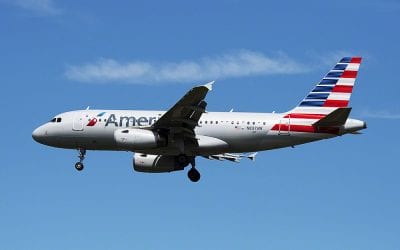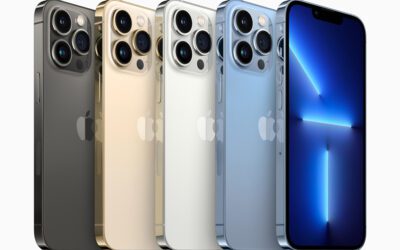I don’t know about you, but when I travel, especially by air, I worry about my luggage arriving at my destination with me and that my belongings will be intact inside the luggage. The choice of luggage we purchase can greatly impact that.
Soft-sided bags can be squeezed into overhead bins and under seats in planes even when somewhat too large. If hard-sided bags are a bit too large, they won’t fit as they can’t be squeezed. Therefore, soft bags are better for carry-on. I prefer structured soft bags, the ones with quality internal frames. Their structure allows them to hold their shape even when not totally filled, preventing one’s packed belongings from being crushed and damaged. Ballistic nylon is currently the best material for soft-sided bags.
Hard-sided bags can be a good choice for checked luggage. Many are ultra-lightweight. The best ones are manufactured from carbon fiber or a carbon fiber-polycarbonate combination. Polypropylene and ABS lack durability. Aluminum dents too easily and is heavy.
Luggage comes in many styles:
Duffel bags, wheeled or not, offer a large open space to stow gear and belongings, but have little or no internal organization. Wheeled duffels are heavier and less physically flexible than their counterpart, but are easier to handle while on the go.
Backpacks are particularly well-suited as carry-ons. They’re mobile and offer organization, but their size is limited since they’re primarily meant to be worn on one’s back. The ones with wheels can be less tiring to use in airports and stations, but are less flexible and heavier. Some are only top loading, a disadvantage when needing something packed in the bottom, while others can be back or front loaded.
Wheeled suitcases are highly mobile and, like duffels, can be significantly larger than backpacks. Most have good internal organization and external pockets. They’re highly mobile.
The feature set of your travel bags is important:
Especially if you’re an air traveler, bag size and weight are critical. Your bags must meet airline size and weight limits when filled. Be careful choosing. Check the airlines thoroughly before purchasing luggage, as airlines charge plenty for oversize bags.
Luggage durability is important. Your bags need to be able to last for the duration of your trips with their contents protected. I’ve seen passengers’ bags arrive at the airport without all their belongings due to bag damage.
TIP: Sometimes even the best made luggage can be damaged in transit. I always travel with 2–3 travel rolls of duct tape to repair our bags if necessary.
I prefer wheeled luggage for my bags, other than my backpack. They are much easier to move through airports, train stations, hotels, etc., than bags without wheels, which must be carried. I prefer bags with four wheels, which can spin a full 360 degrees, as they stay upright, don’t fall down, and are easy to move down the aisles of planes and trains. The best ones can be used with just two of their four wheels as desired.
If you use wheeled luggage, it requires a retractable telescoping handle to steer, push or pull it. I prefer a single handle made from high grade aluminum tubing that will hold up even when the bag is overweight.
All bags need regular handles for carrying them as necessary. I prefer my bags to have multiple handles, one each on the top, side, and bottom. Many bags don’t have a bottom handle, which helps airline baggage handlers pick up bags and place them on conveyor belts rather than throw them.
I prefer expandable bags, in case I need to pack travel purchases during my journeys.
Stay away from white or off-white bags, as they get very dirty-looking, quickly. If you select a black bag like so many others, ensure it has brightly colored trim and/or use brightly colored accessories such as an elastic belt around the bag, in a neon color, to differentiate it from bags belonging to others.
If you use both checked and carry-on luggage, make sure your larger bag has a piggy-back clip to hook your bags together as a single unit for easier walking.
I prefer a bag with pockets and compartments, plus straps, to help me organize my belongings and pack them in such a way that it is easy for TSA (Transportation Security Administration) to recognize them via x-ray, so they don’t open and hand-check the bags.
Luggage should be made from water-resistant materials. Hard-sided bags generally seal well with latches, but soft bags use zippers to close and keep them secure. Since zippers tend to leak, they need a water-resistant backing.
Bags should have a built-in locking system or at least a way to lock them with an external lock.
TIP: When traveling internationally, security outside the U.S. generally doesn’t have the ability to open “TSA locks,” so use cable ties, preferably numbered, to secure your bag.
The bag you choose needs to meet your needs and budget. I prefer four-wheeled, soft-sided, structured bags, which have well organized interiors, for my checked and carry-on bags. I also use a mid-size backpack as my personal bag to carry my camera and laptop gear.
After many years working in corporate America as a chemical engineer, executive and eventually CFO of a multinational manufacturer, Ned founded a tech consulting company and later restarted NSL Photography, his photography business. Before entering the corporate world, Ned worked as a Public Health Engineer for the Philadelphia Department of Public Health. As a well known corporate, travel and wildlife photographer, Ned travels the world writing about travel and photography, as well as running photography workshops, seminars and photowalks. Visit Ned’s Photography Blog and Galleries.



